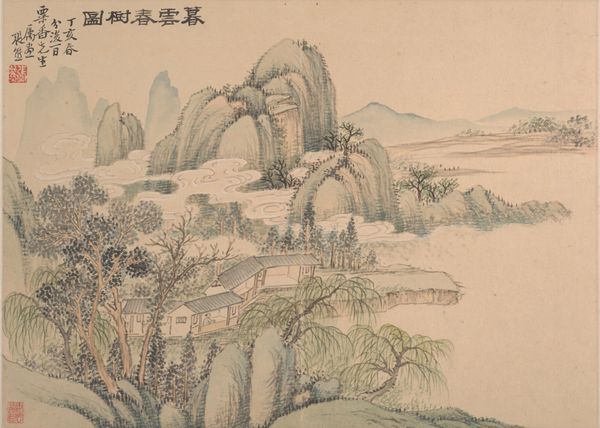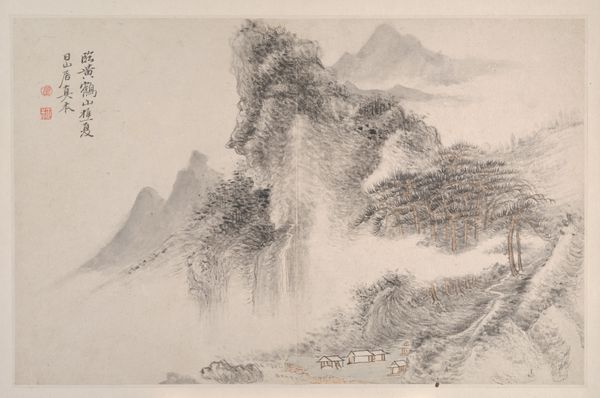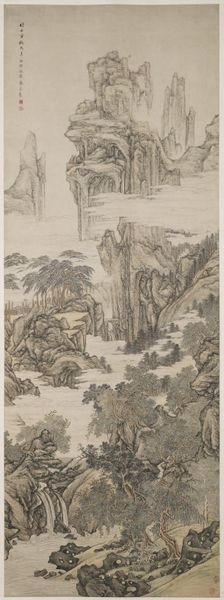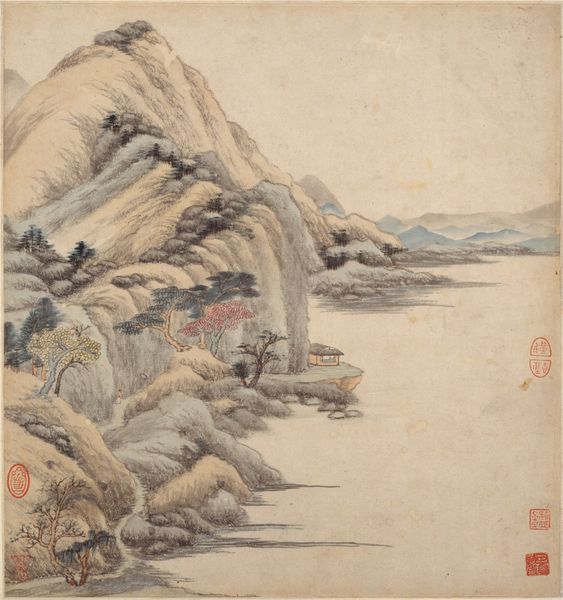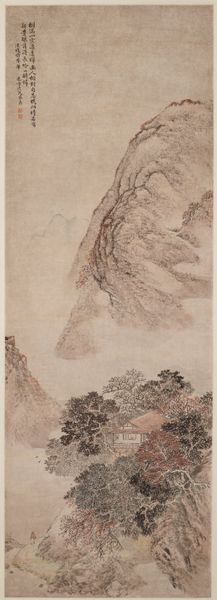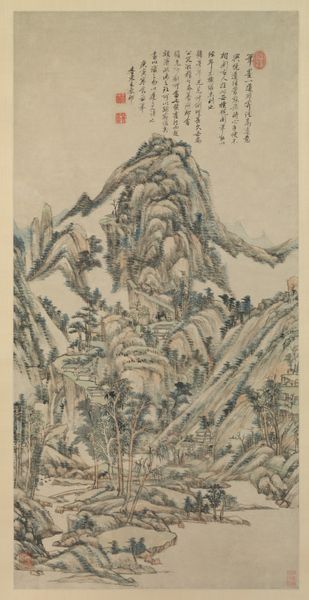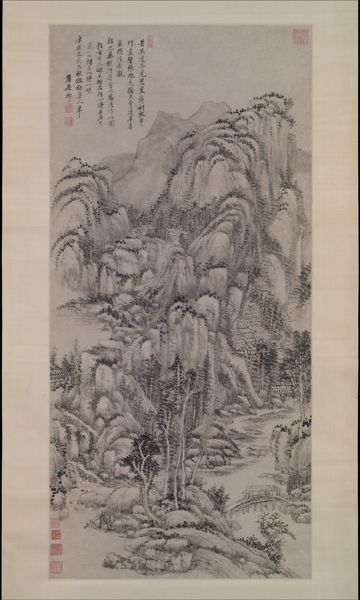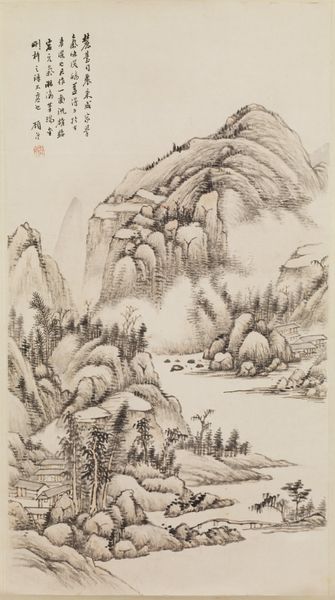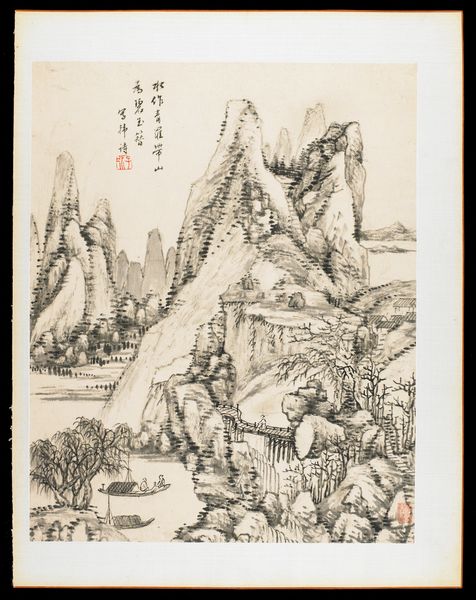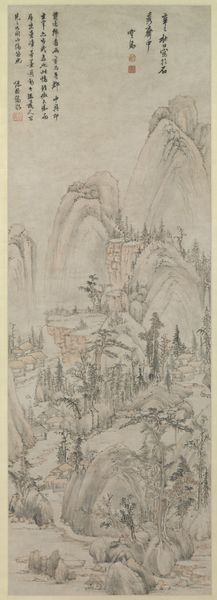
painting, watercolor
#
painting
#
asian-art
#
landscape
#
watercolor
#
geometric
Dimensions: Each leaf: 9 1/8 x 6 3/4 in. (23.2 x 17.1 cm)
Copyright: Public Domain
Editor: Xiao Yuncong’s "Landscapes," painted in 1668 using watercolor, presents this really interesting composition of layered hills. It feels both vast and intimate at the same time. How do you interpret this work, especially given its historical context? Curator: It's intriguing, isn't it? When I look at "Landscapes," I see more than just a scenic view. Consider the tumultuous period in which Xiao Yuncong was painting – the transition from the Ming to Qing dynasty. Many artists at this time used landscape painting as a form of veiled protest or to express feelings of displacement. Do you notice how the meticulously rendered details of the landscape might suggest a longing for a past era, a golden age? Editor: That’s a compelling point. The artist uses so much geometric line work. Are the layers of geometric lines indicative of the struggle or resistance? Curator: Precisely! It prompts us to consider who is included, who is excluded, and whose stories are being told – or, in some cases, not told – within this artistic narrative. How do you think the painting's medium contributes to this interpretation? Editor: Knowing it's watercolor changes my perspective; its delicate nature conveys a certain fragility, which amplifies the sense of longing and loss you mentioned. The geometric and repetitive nature makes me think of production lines and how humans' labor overpowers natural environments. Curator: Exactly. It reflects broader anxieties and contestations around identity, power, and cultural memory during a time of immense social and political change. So, what broader meaning do you take away now? Editor: Understanding the historical backdrop and the artist’s potential motivations really enriches the experience. I see how a seemingly simple landscape can be such a powerful statement. Curator: Indeed, this artwork encourages us to think more critically about the narratives embedded in art and their relationship to broader societal issues. I am very glad to learn that you take away some socio-political thinking here.
Comments
No comments
Be the first to comment and join the conversation on the ultimate creative platform.
